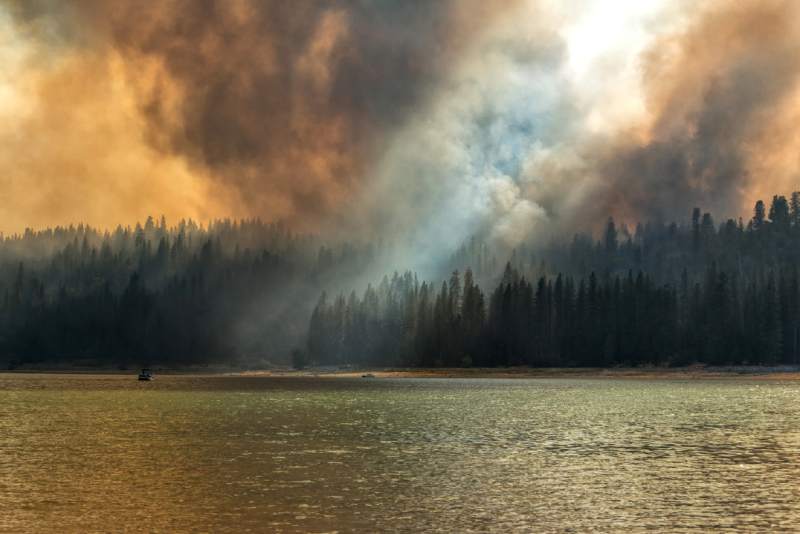
In the wake of the seven wildfires that swept across Northern California, Sonoma, Mendocino, and Napa communities are working to recover. Much of this process is focused on processing the emotional trauma that has occurred, honoring those who have been lost, and beginning to rebuild the nearly 9,000 structures that burned. For Russian Riverkeeper, as the immediate dangers to the community have passed, their focus has turned to minimizing the harmful impacts of wildfires on watershed health.
Wildfires can affect streams and rivers in numerous ways, including toxic runoff, increased erosion and sedimentation, nutrient and temperature changes, and the unwelcome presence of large debris. With winter rains looming, one of the most immediate concerns for the Russian River is toxic runoff. As water flows over burnt-out structures, especially in dense settlements like Santa Rosa, it will collect all manner of household and construction chemicals exposed and mobilized in the ruins – paints, solvents, pesticides, plastics, rubber, asbestos – all of which will runoff into local waterways and can be toxic to humans and fish. Runoff of the ash from burnt vegetation also contains very high levels of nutrients, which can lead to harmful algal blooms that threaten human recreation and aquatic wildlife.
In the longer term, communities will have to combat erosion after the fires burned away large swaths of vegetation to the roots, destabilizing hillsides and stream banks. The resulting erosion will not only increase the likelihood of dangerous mudslides in the coming months, but will also intensify the rate of fine sediments settling into waterways, potentially smothering streambed habitat right before the salmon spawning season.
Russian Riverkeeper is working with Sonoma County Conservation Action and Clean River Alliance to mobilize volunteers to protect and restore local waterways from these impacts. Riverkeeper and volunteers are working quickly to repair storm drains damaged in the fires to prevent fire debris and toxic runoff from draining into the sewer system. In the coming weeks and months, they will also build and install erosion control structures like straw wattles and willow plantings on fire-damaged streams.
Russian Riverkeeper plans to set up a service providing their certified erosion control and native plant expertise to local landowners to help sustain the health of the river during the recovery process. Landowners interested in learning more about how to control erosion, sedimentation, and toxic runoff should reach out to Russian Riverkeeper directly on how to implement these strategies on their own properties.
As Russian Riverkeeper works to recover, we are all acutely aware that our Santa Barbara Channelkeeper and other Southern California Waterkeepers are still in danger from the Thomas and other fires, one of the largest wildfires in state history. In the immediate aftermath of the fires, many are struggling to recover and support neighbors and family who have been impacted and eventually to resume normal life and rebuild. In this difficult time, our local Waterkeepers are here to support California communities and lead efforts to help our rivers, streams, and all manner of aquatic life recover.
Russian Riverkeeper inspires the community to protect the Russian River forever. To volunteer for fire recovery or donate, please visit https://russianriverkeeper.

Executive Director Sara Aminzadeh leads CCKA’s initiatives to protect and defend California’s ocean, bays and rivers.



